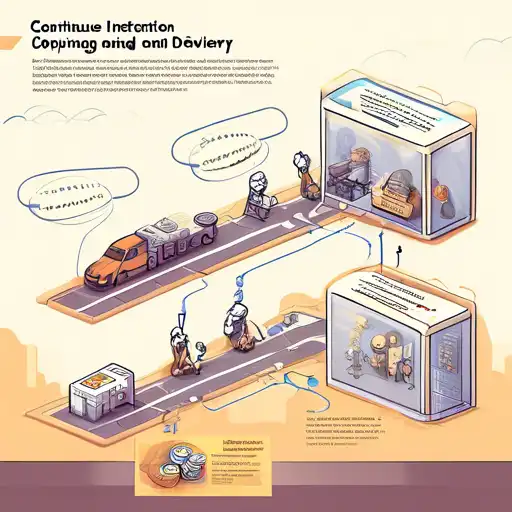What is Continuous Integration and Delivery?
Continuous Integration (CI) and Continuous Delivery (CD) are pivotal practices in modern software development, aimed at improving the efficiency and reliability of software releases. CI/CD automates the integration of code changes from multiple contributors into a single software project, ensuring that the software can be reliably released at any time.
The Core Principles of CI/CD
At its heart, CI/CD is about automating the software release process. Continuous Integration involves automatically testing and building code every time a team member commits changes to version control. Continuous Delivery extends this by ensuring that the code can be deployed to production at any time, with the push of a button.
Benefits of Implementing CI/CD
- Faster Release Cycles: Automating the build and test process speeds up development cycles, allowing teams to release updates more frequently.
- Improved Code Quality: Immediate feedback on code changes helps identify and fix bugs early in the development process.
- Reduced Deployment Risks: By integrating and testing code changes regularly, teams can reduce the risk associated with deployments.
- Enhanced Collaboration: CI/CD encourages more frequent code commits and collaboration among team members, leading to better software.
How to Implement CI/CD in Your Projects
Implementing CI/CD requires a combination of tools and practices. Start by setting up a version control system like Git, then integrate a CI/CD tool such as Jenkins, Travis CI, or GitHub Actions. Automate your build, test, and deployment processes to ensure smooth and reliable software releases.
Common Challenges and Solutions
While CI/CD offers numerous benefits, teams may face challenges such as flaky tests, slow builds, or integration issues. Addressing these requires optimizing test suites, parallelizing builds, and ensuring clear communication among team members.
The Future of CI/CD
As software development continues to evolve, CI/CD practices are becoming more sophisticated, with trends like GitOps and AI-driven testing shaping the future of automated software delivery. Embracing these advancements can help teams stay competitive in the fast-paced world of software development.
For more insights into optimizing your development workflow, explore our guides on DevOps best practices and automated testing strategies.
